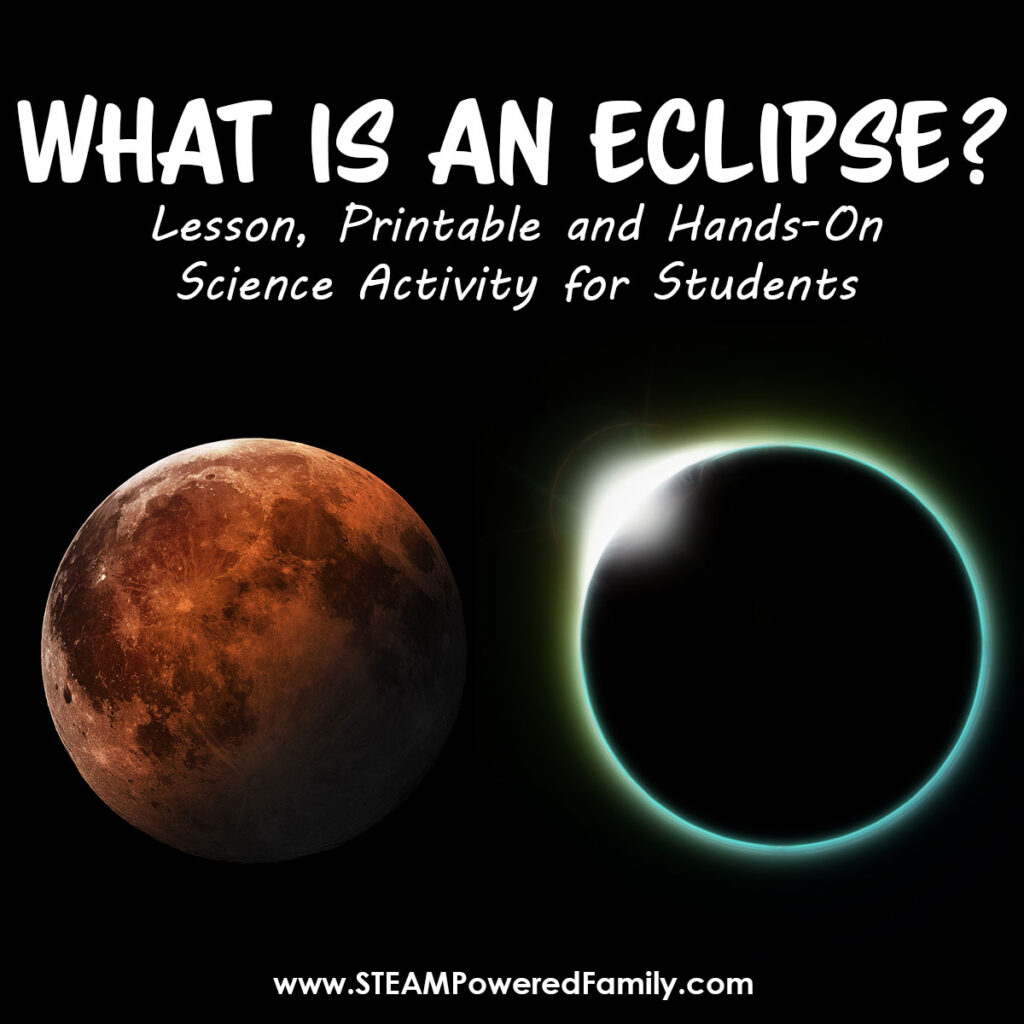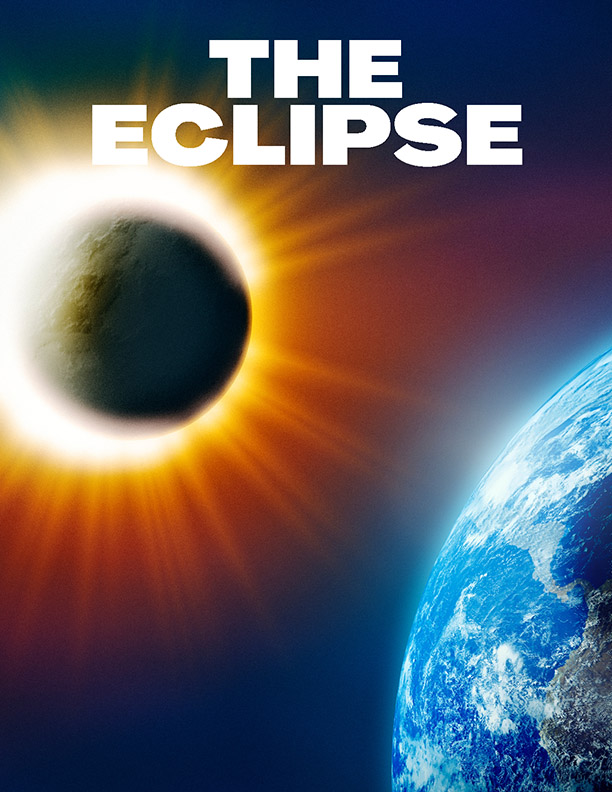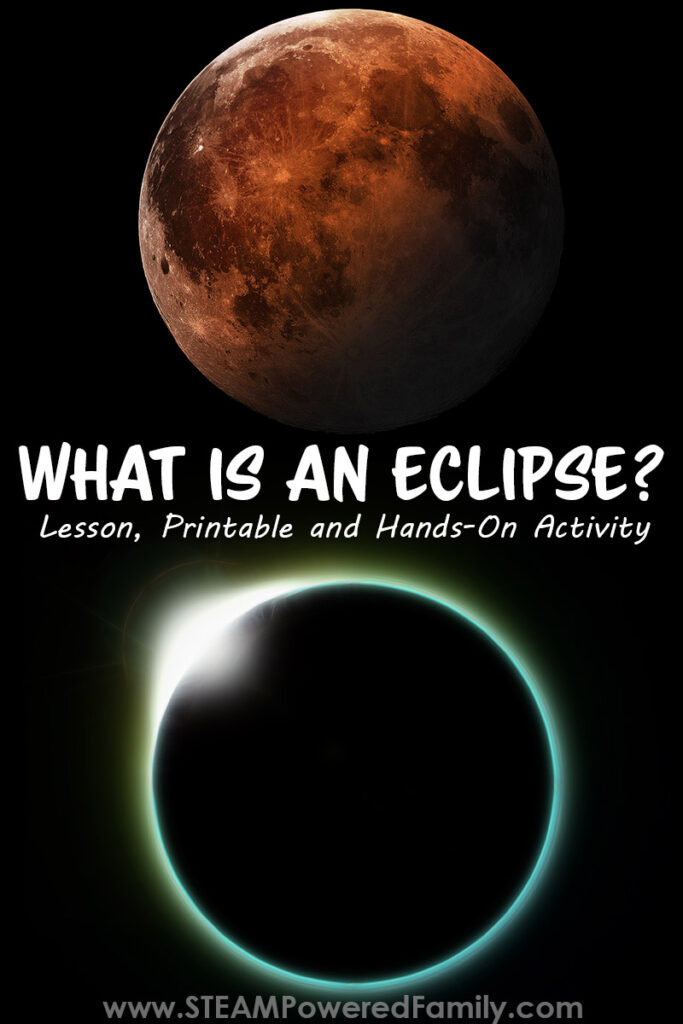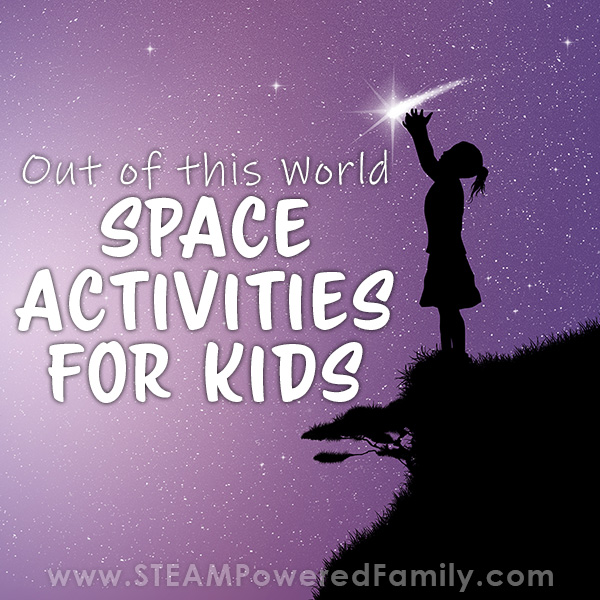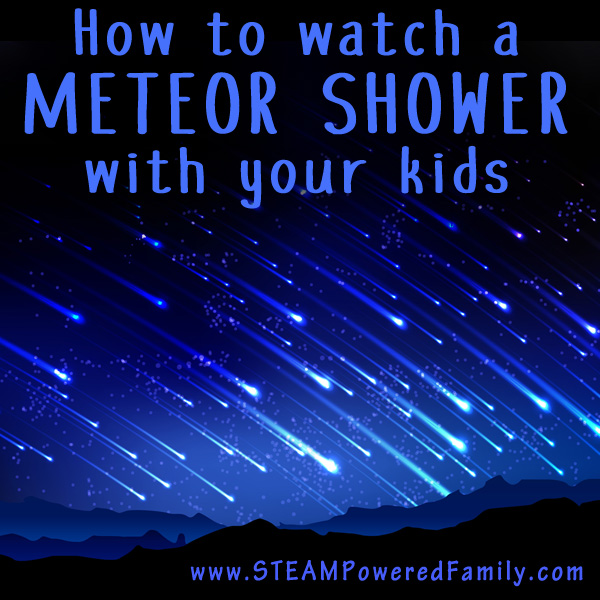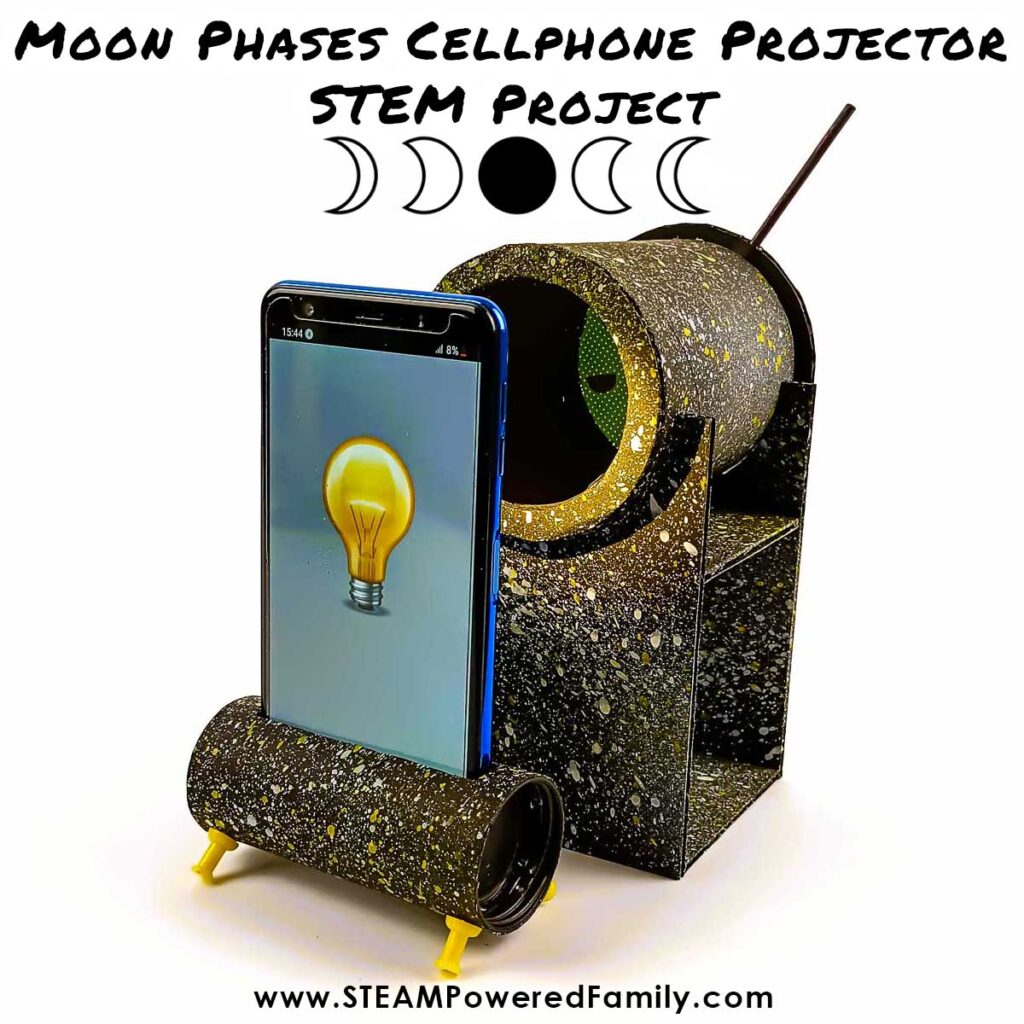What is an Eclipse?
What is an eclipse? NASA describes an eclipse as an event when one celestial body such as a moon or planet moves into the shadow of another celestial body. The most common eclipses we notice and experience here on Earth are Lunar Eclipse and Solar Eclipse. Today we are going to learn more about an eclipse and do a hands on project that will demonstrate why a solar or lunar eclipse happens.
Solar and Lunar Eclipse Activity for Kids
Disclaimer: This article may contain commission or affiliate links. As an Amazon Influencer I earn from qualifying purchases.
Not seeing our videos? Turn off any adblockers to ensure our video feed can be seen. Or visit our YouTube channel to see if the video has been uploaded there. We are slowly uploading our archives. Thanks!
What does Eclipse mean?
“Eclipse” is derived from the Greek word “ekleipsis,” which means “fail to appear”. During a lunar or solar eclipse here on Earth, the sun or moon seem to magically disappear from the sky. Almost as if they are being erased.
Can you imagine how people must have felt seeing the sun or moon seem to disappear before they understood the science behind this phenomenon?
The term eclipse is most often used to describe a solar eclipse, when the Moon’s shadow crosses the Earth’s surface, or a lunar eclipse, when the Moon moves into the shadow of Earth.
There are two types of shadow an eclipse makes: the umbra and the penumbra. The dark part of the shadow is the umbra, and the part of a shadow that’s a little lighter is the penumbra. An eclipse can either be a partial eclipse or a total eclipse.
A partial solar eclipse happens when the Sun, Moon and Earth are not exactly aligned and the Sun appears to have a dark shadow on a small part of its surface.
Let’s learn about the two different types of eclipses on Earth and the different aspects within each one.
What is a Solar Eclipse?
The Solar Eclipse happens when the moon is aligned in between the sun and the moon in a straight line. When this happens, the Moon blocks the light of the Sun from reaching Earth. During a solar eclipse, the Moon casts a shadow onto Earth.
There are two to five solar eclipses each year, with a total eclipse taking place every 18 months or so. Whether you can view that eclipse depends on where you are in the world. As the Earth rotates, the Moon’s shadow on Earth – and the view of the eclipse – travels from west to east.
Solar eclipses can only occur during a new moon. Many animals rely on the sun to inform their behaviours. So it isn’t surprising that animals sometimes become confused and behave strangely during a total eclipse of the Sun.
What is an Annular Eclipse?
An annular solar eclipse happens when the Moon is farthest from Earth and appears smaller and does not block the entire view of the Sun. Remember, the moon’s orbit is an elliptical orbit, so the distance of the moon from Earth varies. The Moon in front of the Sun looks like a dark disk on top of a larger Sun-colored disk. This creates what looks like a ring around the Moon.
How Common is a Total Solar Eclipse?
Total eclipses are extremely rare because they require a very precise alignment between the centers of the Sun and Moon. Plus the Moon is often too small to fully cover the Sun.
Total solar eclipses occur on average about every 360 to 410 years. The last total solar eclipse was in 2017.
Viewing a Solar Eclipse Safely
It is never safe to stare directly at the sun and this is especially true during an eclipse. You must use special solar eclipse glasses to protect your eyes. Never, ever look at the sun or solar eclipse through a telescope, camera or binoculars as you will instantly damage your eyes.
NASA has some great tips on how you can view the eclipse safely. I used a colander during an eclipse and it worked beautifully!
You can also make a pinhole camera with your students. Learn how to make a pinhole camera with our simple tutorial.
Video Explainer of Solar Eclipse
What is a Lunar Eclipse?
The Moon moves in an orbit around Earth. At the same time, Earth orbits the Sun. Sometimes, everything aligns and the Earth moves between the Sun and the Moon. When this happens, Earth blocks the sunlight that normally is reflected by the Moon. Instead of light hitting the Moon’s surface, Earth’s shadow falls on the Moon. This is an eclipse of the Moon, or a lunar eclipse. A lunar eclipse can occur only when the Moon is full.
There are on average two lunar eclipses per year, although there can be as many as three to five in a year. For example, there were four in 2020.
What is a Blood Moon?
A total lunar eclipse, also called a Blood Moon, happens in 37.3% of all lunar eclipses. It is called a Blood Moon because the moon will appear red. A total lunar eclipse happens about every two and a half years.
Lunar eclipses can only occur during a full moon. The longest a lunar eclipse can last is 3 hours and 40 minutes. During a lunar eclipse, we experience high tides because the moon has a very strong influence on the oceans and tides.
Video Explainer of Lunar Eclipse
When is the Next Eclipse?
Guess what? It varies based on where you live on the planet. No single eclipse will be seen by everyone, it will only be visible on Earth from certain places, with some places having a better view than others, and for a small amount of time.
To see when the next lunar or solar eclipse will be visible where you are, visit Time and Date. If you are in the United States, NASA has a great resource on eclipses.
Eclipse Activity for Kids
This is a great demonstration you can create with your students so they can see exactly how the different eclipses occur.
Materials and Supplies
Two Paper Plates – one small, one large
Glue gun and glue sticks
Styrofoam Balls – 1 large, 1 medium, 1 small
Wooden skewers
Hobby knife or cutter
Paint – blue/green for Earth, white for Moon, orange/red/yellow for Sun, plus black for the plates (aka Space)
Paint brushes
Headlamp – optional to make the sun light up and cast shadows
Directions
First, check out this YouTube Short we made of our project so you can see the final result. This is a very simple build, but it always helps to see the final product in action!
Paint the plates black, then paint the styrofoam balls to make the Sun, Moon and Earth.
a) Paint the large one orange, yellow. This will be the Sun.
b) Paint the medium one blue, green. This will be the Earth.
c) Finally, paint the small one white, gray. This will be the Moon.
Depending on the length of your skewers you will want to use a hobby knife or cutter to trim them to about 6 inches long. If you leave them too long they can become top heavy.
Insert a craft skewer into each ball.
Now, create a hole at the centre of the smaller plate. The skewer with the Earth ball will go through the smaller plate and be glued to the larger plate underneath. Use a glue gun to attach the bottom of the Earth Skewer to the bottom plate right in the centre. Make sure the small plate can still turn.
Now, use the glue gun to glue the Sun skewer onto the side of the larger plate. Hold it until it dries. If it helps, you can create a small hole near the edge of the plate to insert the skewer then glue it.
You can now glue the Moon skewer to the edge of the small plate. If needed, you can create a small hole near the edge of the plate to insert the skewer then glue it. Earth will be in the middle of that small plate.
Make sure to not glue the plates to each other so you can tilt, slide and spin it.
Now place the small plate on top of the large plate.
Demonstrating an Eclipse
Slowly turn the plates to show how the moon circles Earth, and play with the alignments until you show how the alignment of the Earth, Sun and Moon during a lunar eclipse or a solar eclipse. It can sometimes help to use a flashlight on the Sun. Strapping on a headlamp to the Sun works really well for this demonstration to create the shadows.
Printable Eclipse Activity Pack
Looking for a printable of this activity? You can grab our Eclipse printable pack from the STEAM Powered Family Shop which includes instructions for the activity, a summary of the information contained in this article, plus some activity pages for your students such as word scramble, research prompts and question pages.
Have fun exploring eclipses!


